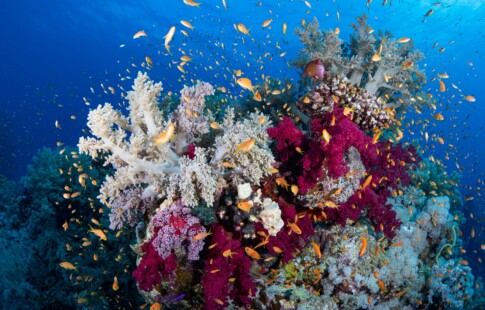
How Do Climate Change and Pandemics Relate?
We are reader-supported. When you buy through links on our site, we may earn affiliate commission.
The origin of the COVID-19 virus raised debates within the scientific community. Professionals believe the illness derived from an animal-to-human interaction. Others explore the hypothesis of trapped viruses melting into the environment through ice caps.
Though scientists remain unaware of the specific cause, they understand its relation to climate change. As the Earth’s temperature rises, the global ecosystem changes. The rippling effects of ecological degradation may continuously generate pandemics throughout humanity’s lifetime.
Why is the Temperature Rising?
The leading cause of climate change derives from greenhouse gas emissions. When we power our air conditioners, fuel our cars, charge our electronics and more, we contribute to air pollution. Unfortunately, nearly 80% of the U.S. energy supply originates from fossil fuels, generating high quantities of emissions.
Greenhouse gas emissions alter Earth’s natural temperature control process when they invade the atmosphere. Organically, the planet absorbs solar energy, creates heat, warms the surface, collects excess energy and sends it to space. The process generates life-sufficient temperatures on the surface, supporting all life.
When greenhouse gases fill the atmosphere, they increase the solar energy-to-heat conversion rate. They also contain excess energy in the atmosphere for extended periods. Over time, the emissions’ effects raise Earth’s temperature.
What are its Effects on Different Species?
As the global temperature rises, it generates various ecologically degrading effects. The impact that influences the pandemic variant the most derives from regional weather alterations. A warmer planet experiences an increased evaporation rate, leaving many regions in extended drought periods.
Water displacement also increases precipitation in some areas, causing frequent flooding occurrences. Both droughts and floods decrease the reliable development of vegetation and consistency of habitats. Animals begin migrating away from evaporation-affected regions, placing various species in foreign areas.
The migration effect places many animals at risk of extinction. Without adequate food sources, protection and other resources, species may be unable to support themselves. The result also influences new interactions between exotic animals and humanity.
Though scientists have yet to pinpoint the origin of the COVID-19 virus, they evaluated potential transmission occurrences from bats. Researchers discovered a similar strain of the virus in a species in southern China. The accuracy of this hypothesis remains unknown, and it raises valid climate change concerns.
As animals travel away from degrading climates, they transport diseases and viruses with them. Humans will experience increased exposure to the illnesses, creating health concerns and complications. Fortunately, there are ways to prevent interactions with exotic animals and limit the spread of diseases.
How Can We Prevent Future Pandemics?
When exploring pandemic prevention methods, we must first evaluate the source. Many illnesses originate from animal to human transmissions. We can reduce the quantity of exotic species in our living spaces by reducing the enhanced greenhouse effect.
Limiting our carbon emissions can significantly improve atmospheric conditions. The majority of residential emissions derive from heating, ventilation and air conditioning (HVAC) systems. When we power our temperature control devices with fossil fuel energy, we expand our carbon footprints.
Installing renewable energy devices and smart thermostats can reduce the environmental degradation produced by the residential sector. Rooftop solar panels generate clean electricity using photovoltaic cells. They absorb sunlight, release electrons, create a current and transfer it into electricity.
Homeowners can connect their solar energy system to programmable thermostats, reducing energy absorption and stress on the device. The smart device connects to a resident’s smartphone or tablet, helping them adjust their home’s temperature on the go. It also uses motion detection sensors, turning the system off in a vacant house.
The transportation sector also affects climate change. Nearly 29% of American greenhouse gas emissions derive from fuel-reliant vehicles. We can preserve the environment, limiting mass migration by adopting alternative transportation methods.
Electric vehicles (EVs) meet modern travel needs without producing tailpipe emissions. An organization on the East Coast began manufacturing and installing solar EV charging stations, eliminating the air pollution associated with personal transportation. The device contains a solar-paneled canopy and a charging cord, increasing the ease of powering vehicles.
We can also prevent future pandemics by evaluating effective protection techniques through the COVID-19 occurrence. The Center for Disease Control (CDC) recommends that individuals wear mouth and nose coverings in crowded places, like buses or airports. They also recommend staying home when you experience any kind of illness.
Many of the human-to-human transmission limitations were successful through this pandemic. We can utilize similar techniques while the migration effect remains present. Distancing ourselves from sick individuals, wearing a mask and improving indoor ventilation can decrease the development of pandemics.
Taking the First Step
Individuals can do their part to prevent future pandemics by limiting their interaction with exotic animals. They can also restrict their greenhouse gas emissions by adopting sustainable technologies. Residents may additionally stay home when they feel sick and reduce their interactions with other ill individuals.
Share on
Like what you read? Join other Environment.co readers!
Get the latest updates on our planet by subscribing to the Environment.co newsletter!
About the author

Jane Marsh
Starting from an early age, Jane Marsh loved all animals and became a budding environmentalist. Now, Jane works as the Editor-in-Chief of Environment.co where she covers topics related to climate policy, renewable energy, the food industry, and more.





